Weight, quality, time and location data stored in the memory
A smart loader scale does much more than just weigh the load. It also remembers the time of loading and the type of goods loaded. In addition, for example, it automatically sets the loader to the desired position and prevents it from hitting the roof of the building. An integrated scale can also access the location information provided by Valtra Guide and later show the exact loading position on the map.
Ville Kari has experience with both traditional loader scales and Precision Lift & Load, which is integrated into the SmartTouch armrest.
Ville Kari has a dairy farm with 60 cows in Lehtimäki, Finland. In addition to dairy cattle, Kari also raises the bull calves born on the farm. Alongside his own farming and agricultural contracting, Kari also does forest contracting with two tractors and sells gravel from his own gravel pit.
“We have an organic farm, which means we have to keep a constant record of the feed balance. The feed balance shows how much feed has been made, how much has been fed and how much is left. Location information is also required to determine how much feed is in each bunker, silo or bale. Precision Lift & Load is a huge help in maintaining the feed balance,” says Kari.
When Kari goes out to collect silage from the bunker, for example, the smart loader can tell how much forage has been collected, when and where. The mixer wagon is also equipped with a scale, which is used when making fodder mixes; cows, heifers and bulls all have their own recipes.
The Precision Lift & Load feature on the Valtra N175 Direct tractor has increased the precision of all loading work and made it easier to track the feed balance, for example. Ville Kari has used Precision Lift & Load for more than 100 hours in loading work, as well as a retrofitted loader scale for three years.
Speed and precision
Ville Kari also has more than three years of experience with the retrofitted Q-companion loader scale, which he still uses with his Valtra T234 Direct tractor. However, the retrofitted loader scale does not store location information.
“One of the advantages of the Precision Lift & Load being integrated with the tractor is that the bucket automatically turns to the weighing position. With the old loader scale, the bucket always had to be turned to the calibrated measuring position. It was pretty slow waiting for the bucket to get in exactly the right position,” Kari explains.
The integrated loader scale has also added precision to all tasks. When sand used to be sold from the gravel pit, the amount had to be estimated. Likewise, the weights of bales and the like were estimated by eye. Now it is possible to invoice for grain or gravel, for example, with exact precision without too few or too many kilos. It is easy to show the buyer the loaded quantity as the basis for invoicing.
It is also easy to keep track of all the tasks that have been performed, as the name of each task, the weight of each load, the number of loads and the loading location are all listed on an Excel spreadsheet. This data can be used to verify what tasks have been performed for an EU or organic inspector, for example.
Precision Lift & Load can even be used for snowploughing, as the plough attached to the front loader can be automatically returned to the ploughing position at the push of a button. Similarly, an upper limit can be set for the front loader to ensure that it is not raised too high inside the barn. Once created, the settings remain in the system’s memory as separate profiles. •
It is easy to view stored task data on the home computer. The report shows the task name, weight, number of buckets, time and location, and the exact location of each load can be shown on Google Maps with a single click.
Ville Kari’s farm
- Dairy farm that produces milk, meat and grains
- 2 full-time employees plus 1–2 seasonal workers
- 300 hectares
- 60 cows
- 140 calves, heifers and bulls
- Forest contracting, gravel sales, road maintenance
- Valtra tractor fleet: T234 Direct, N174 Versu, T203 Direct, N142 Direct, A93 and 6750
- Sampo Rosenlew C6 combine harvester, Kobelco 140 and Yuchai 135 excavators, NH telehandler
Precision Lift & Load features
- Weighs loads
- Records location, time and type of load
- Easy-to-use shake function
- Loader moves to a set position at the push of a button
- Upper and lower limits for the loader, for example, when working indoors
Precision Lift & Load is extremely easy to use.



